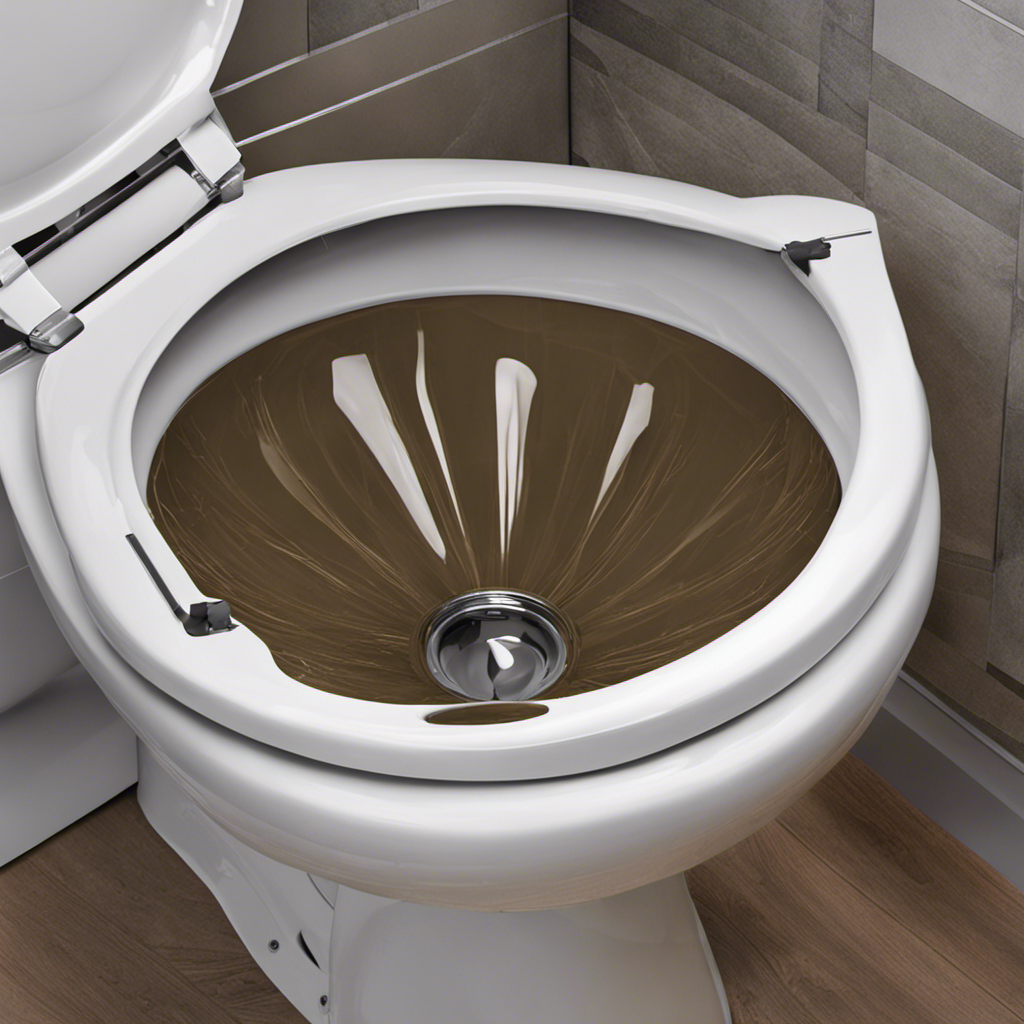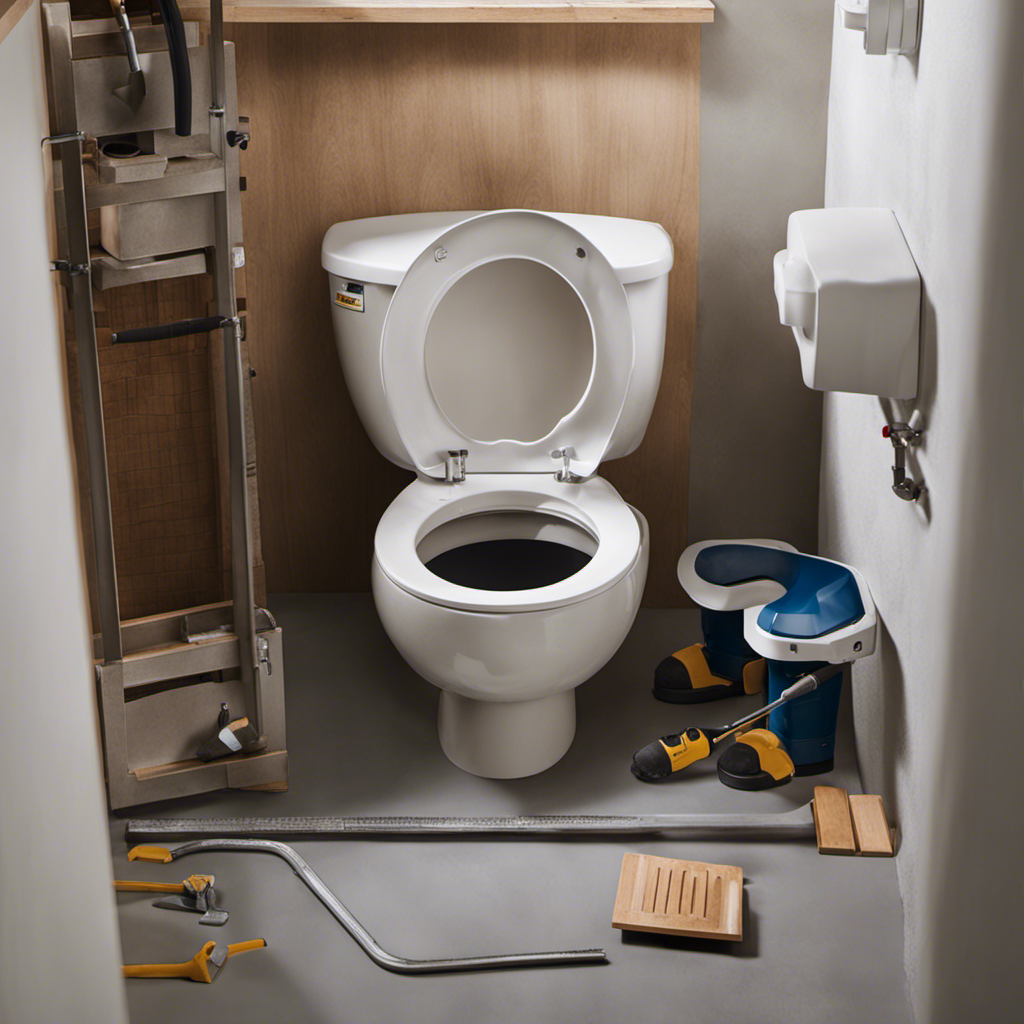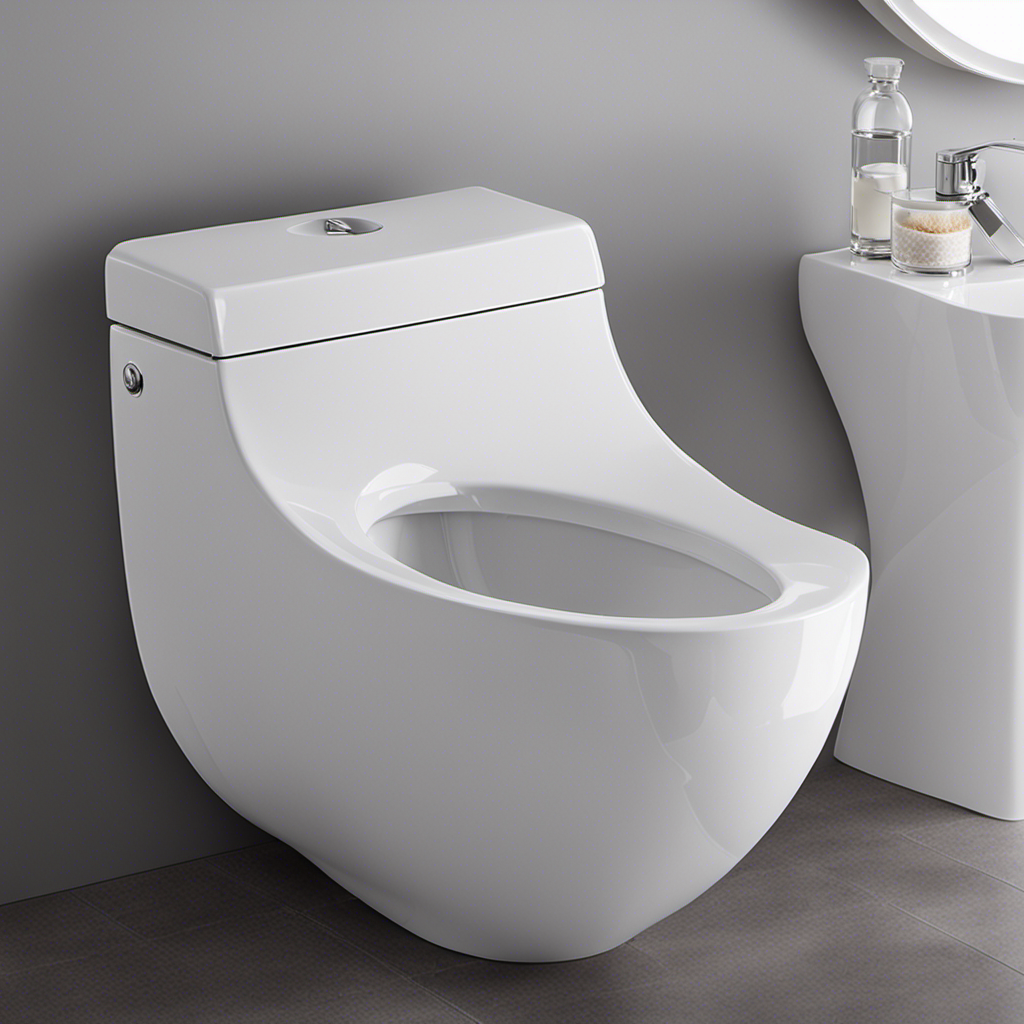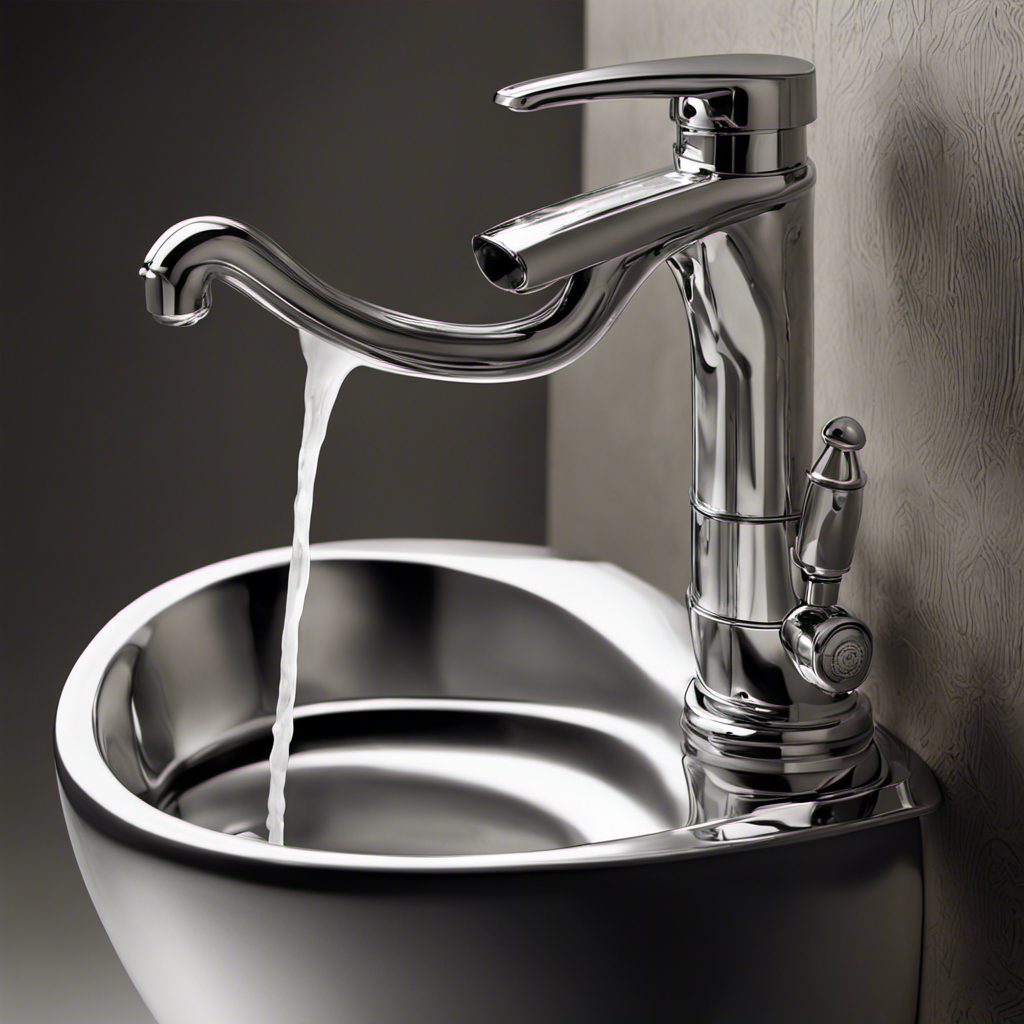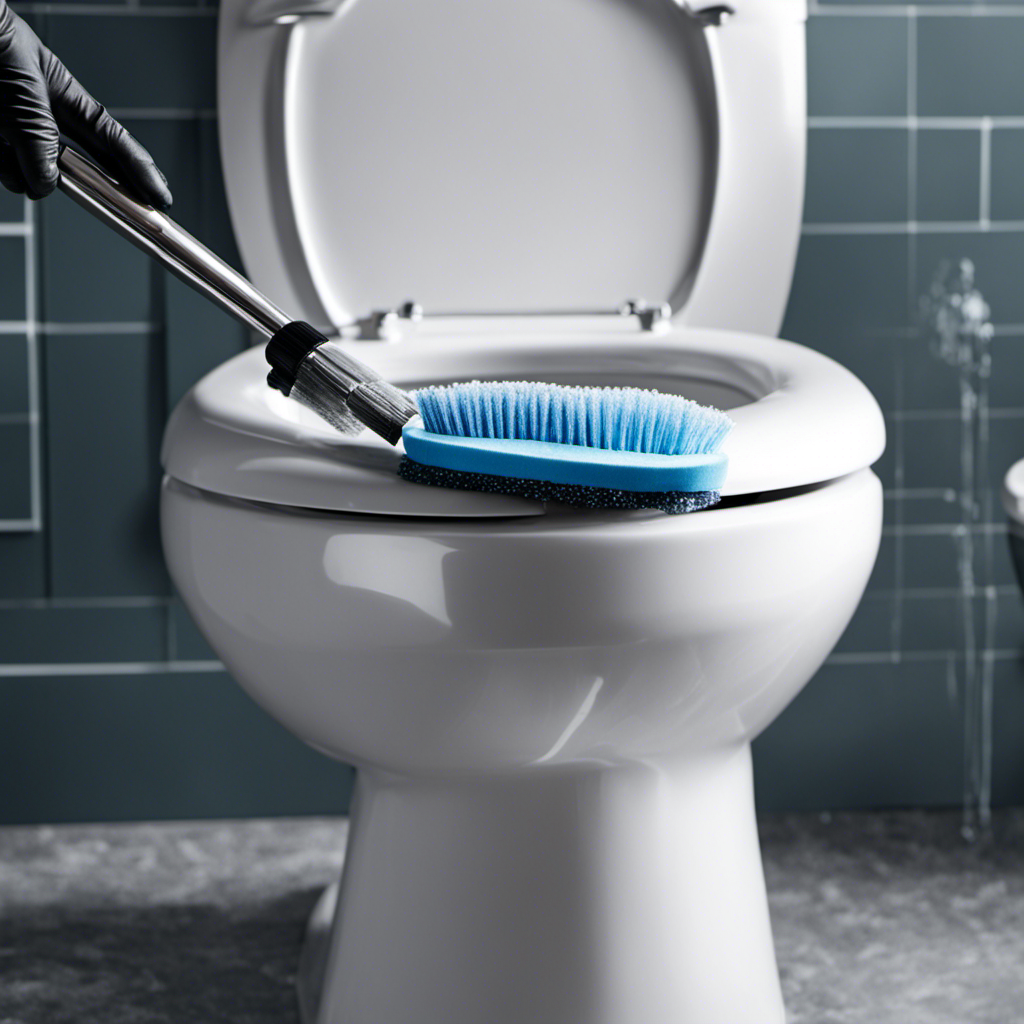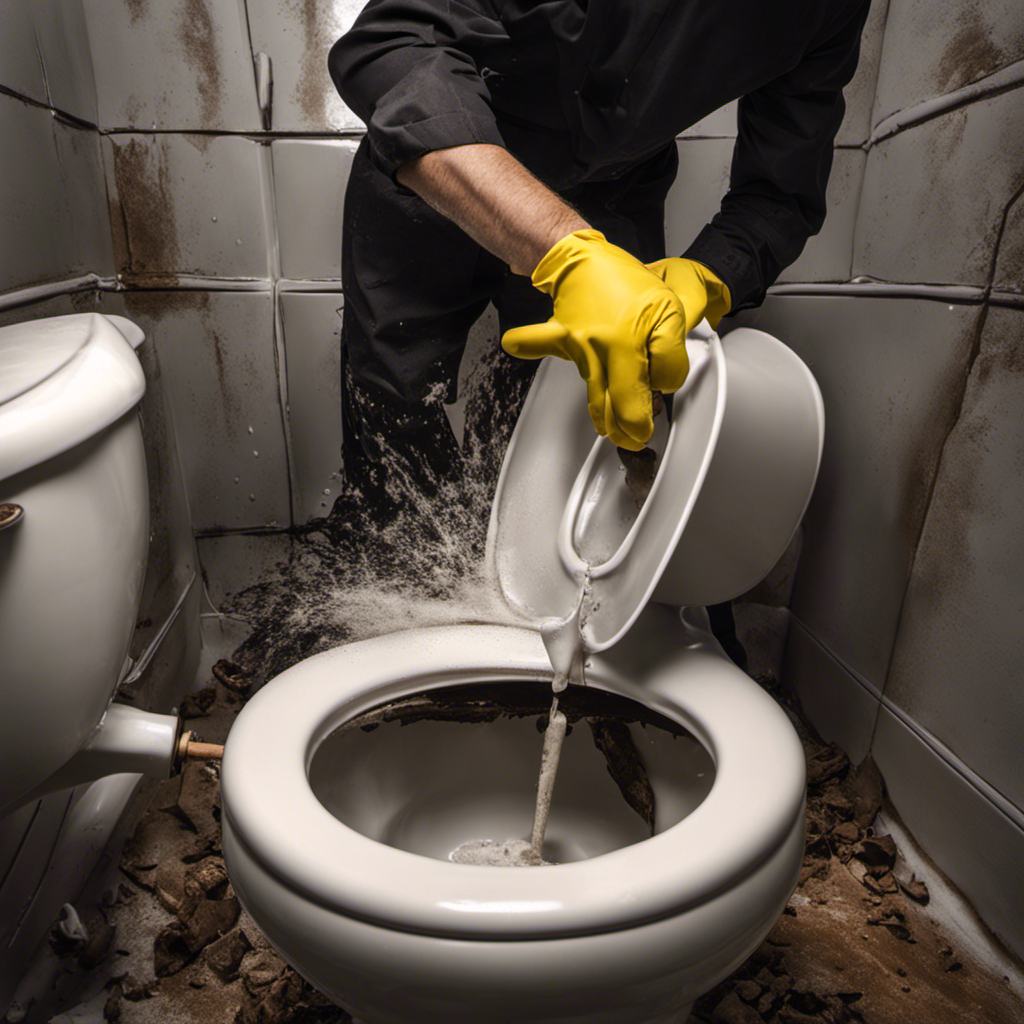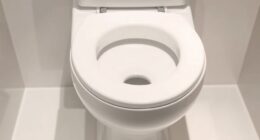I know what you’re thinking – installing a toilet bowl sounds like a daunting task. But trust me, with the right tools and a little guidance, it’s actually not as complicated as it seems.
In this article, I’ll walk you through the step-by-step process of how to install a toilet bowl. From gathering the necessary materials to securing the toilet bowl in place, I’ll provide you with all the technical details you need to successfully complete this project.
Let’s get started!
Key Takeaways
- Gather all necessary tools and materials before starting the installation process
- Remove the old toilet bowl carefully by disconnecting the water supply line and removing the bolts securing it to the floor
- Prepare the area for installation by cleaning the floor, removing debris, and checking the flange for damage
- Install the new toilet bowl by aligning the mounting holes with the flange bolts, securing it to the floor, and connecting the water supply line
Gather the Necessary Tools and Materials
Now that you’ve figured out how to install a toilet bowl, the first step is to gather all the necessary tools and materials.
When it comes to toilet bowl dimensions, it’s important to know the rough-in measurement of your bathroom. This is the distance between the wall and the center of the drainpipe. Most toilets have a standard rough-in size of 12 inches, but it’s always best to double-check before purchasing a new toilet bowl.
As for toilet bowl brands, there are many options available in the market. Popular brands include Kohler, American Standard, and Toto. Make sure to choose a brand that suits your preferences and budget.
With all the tools and materials ready, you’re now well-prepared to move on to the next step: removing the old toilet bowl.
Remove the Old Toilet Bowl
First, you’ll need to disconnect the water supply line from the old toilet. Start by turning off the water supply valve located behind the toilet. Then, flush the toilet to drain any remaining water in the tank and bowl.
Use an adjustable wrench to loosen the nut connecting the supply line to the bottom of the tank. Once the water supply line is disconnected, remove the bolts securing the toilet to the floor using a wrench.
Carefully lift the toilet bowl straight up and place it on a tarp or old towels to avoid any spills.
Now, you can proceed with the demolition process. Depending on local regulations, you may need to follow specific disposal methods for the old toilet bowl. Contact your local waste management or recycling center for guidance on the proper disposal methods in your area.
Prepare the Area for Installation
To prepare the area for installation, you’ll want to thoroughly clean the floor and remove any debris or old wax ring remnants. This is an important step to ensure a proper and secure installation of the new toilet bowl.
Here are some precautions to keep in mind during this process and common mistakes to avoid:
- Wear protective gloves and eye goggles to protect yourself from any harmful substances or sharp objects.
- Use a scraper or putty knife to scrape off any old wax ring remnants from the flange and the bottom of the toilet bowl.
- Clean the floor around the flange using a mild cleaner to remove any dirt or grime.
- Check the flange for any damage or cracks. Replace it if necessary to prevent leaks.
By following these precautions and avoiding common mistakes, you can ensure a smooth and successful installation of the new toilet bowl.
Now, let’s move on to the next step: installing the new toilet bowl.
Install the New Toilet Bowl
After cleaning the floor and removing any debris, you’ll need to carefully position the new toilet in place. Make sure to align the mounting holes on the base of the toilet with the bolts on the flange. Once aligned, lower the toilet onto the flange and press down firmly to create a watertight seal. Next, secure the toilet to the floor by tightening the nuts on the bolts. Be careful not to overtighten as it could crack the toilet. After the toilet is secure, connect the water supply line to the fill valve and turn on the water to check for any leaks. Now that the new toilet is installed, it’s important to perform regular toilet bowl maintenance to prevent common problems such as clogs and leaks. Refer to the table below for troubleshooting tips and solutions.
| Common Toilet Bowl Problems | Solutions |
|---|---|
| Clogged toilet | Use a plunger or a toilet auger to clear the clog. If the problem persists, call a professional plumber. |
| Leaking toilet | Check the wax ring and tighten any loose bolts. If the problem continues, replace the wax ring or call a plumber. |
| Running toilet | Adjust the water level in the tank by adjusting the float or replace the faulty flapper. |
| Weak flush | Check the water level in the tank and adjust if necessary. Clean the rim holes and jet holes to remove any mineral deposits. |
| Noisy toilet | Check and tighten any loose parts. If the noise persists, consider using an anti-sweat valve or call a plumber. |
Test and Secure the Toilet Bowl
Once the new toilet is positioned correctly, make sure to secure it tightly to the floor. This will ensure stability and prevent any movement or leaks in the future.
To test for leaks, follow these steps:
- Turn on the water supply and allow the tank to fill up.
- Add a few drops of food coloring into the toilet tank.
- Wait for about 15 minutes and check the toilet bowl for any signs of colored water.
- If you notice any leaks, tighten the bolts connecting the tank to the bowl or replace any worn-out gaskets.
After securing the toilet bowl, it’s important to adjust it for comfort. Check the height and level of the bowl, making sure it is comfortable for sitting. Use shims if necessary to level the bowl and prevent any rocking or instability. Finally, tighten the nuts on the toilet base to secure it firmly in place.
Frequently Asked Questions
How Do I Choose the Right Type and Size of Toilet Bowl for My Bathroom?
When choosing a toilet bowl for your bathroom, consider the dimensions and material options available. Measure the space available in your bathroom and select a toilet bowl that fits properly. Look at different materials like porcelain or ceramic to find one that suits your needs.
Can I Install a Toilet Bowl Without Any Prior Plumbing Experience?
Yes, you can install a toilet bowl without any prior plumbing experience. However, it is recommended to hire a professional plumber for a smooth and efficient installation. The tools you will need include a wrench, pliers, and a screwdriver.
What Are the Potential Challenges or Issues That Can Arise During the Installation Process?
During the installation process of a toilet bowl, there can be potential challenges and issues. For example, aligning the toilet bowl properly with the flange can be tricky, which may result in leaks or unstable seating.
Are There Any Specific Safety Precautions I Need to Take While Installing a Toilet Bowl?
When installing a toilet bowl, it’s important to take safety precautions to prevent accidents. Some installation tips include wearing protective gloves and eyewear, using proper lifting techniques, and ensuring the area is well-ventilated.
How Do I Properly Clean and Maintain a Newly Installed Toilet Bowl?
To properly clean and maintain a newly installed toilet bowl, it is important to follow proper cleaning techniques. Using recommended cleaning products and regularly cleaning the bowl will help keep it in good condition.
Conclusion
In conclusion, installing a toilet bowl is like embarking on a journey. Armed with the necessary tools and materials, we bravely remove the old toilet bowl and prepare the area for the new one.
With precision and care, we install the new toilet bowl, ensuring its stability and functionality. Finally, we test its performance and secure it in place, ready to serve us for years to come.
Just like a well-planned expedition, this process requires attention to detail and a steadfast commitment to excellence. So, embark on this adventure and revel in the satisfaction of a successfully installed toilet bowl!
